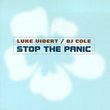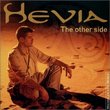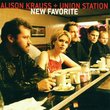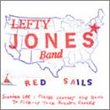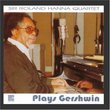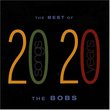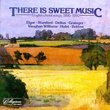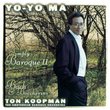| All Artists: Paranda Title: Africa in Central America Members Wishing: 0 Total Copies: 0 Label: Elektra / Wea Original Release Date: 1/1/2000 Re-Release Date: 5/23/2000 Genres: International Music, Pop, Latin Music Styles: Africa, Caribbean & Cuba, South & Central America, Latin Pop Number of Discs: 1 SwapaCD Credits: 1 UPC: 639842730327 |
Search - Paranda :: Africa in Central America
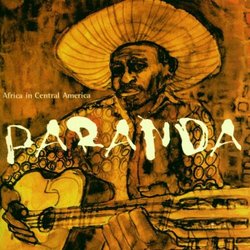 | Paranda Africa in Central America Genres: International Music, Pop, Latin Music
|
Larger Image |
CD DetailsSimilarly Requested CDs
|
CD ReviewsFinally, An Album of Paranda Music Harriet Scarborough | Tucson, Arizona, U.S.A. | 01/10/2000 (5 out of 5 stars) "Somehow I was drawn to this CD. Fascinated with the idea of finding a CD in Tucson titled Paranda, I turned it over only to find that a few of the artists were familiar names: Junior Aranda, Paul Nabor, and of course, Andy Palacio. I have always been a fan of paranda music, and this CD has certainly not been disappointing. As a matter of fact, it has exceeded my expectations.As a Belizean Garifuna, I am especially impressed with this album. It represents a major step in the preservation of traditional Garifuna music. The melding of so many paranda artists from Garifuna enclaves in Central America speaks of the close ties amongst Garinagu regardless of where thy are, and at the same time showcases the range and variety of paranda music even as it spans generations.Paranda music is immensely danceable. And so is this album. Every song on this CD commands the feet to move. Unlike the obvious lustiness of the voluptuous punta and the traditional dignity of the hunguhungu, there is a subtle sexiness to paranda. The songs in Paranda: Africa in Central America have this quality, and it becomes difficult to restrain oneself from dancing as one listens to the songs.My niece, Renee, and I were mesmerized the first time we listened to this CD. We immediately liked every song, but our instant favorite was the duet by Aurelio Martinez and Andy Palacio, Lanarime Lamiselu. The strong solos at the beginning, enhanced by occasional guitar strums, bring out the power of the lyrics.There is much variety in the album, Paranda: Africa in Central America. Whilst maintaining the rhythms and acoustic guitar strums typical of paranda music, the songs vary from the traditional Fuyra, Gabbaga, and Nabor songs to the modern and almost experimental (to my ear)Aurelio Martinez songs. The variety also can be heard in the lyrics. Paranda lyrics typically are stories of life, love, and death; these topics are ably represented in this album. The Latinos have their corridos, the American southerners have country music, and the Garinagu have paranda. The lyrics maybe sad yet derisive, but the music invites you to dance your troubles away." Africa in Central America Said Kobeissi | 10/27/1999 (4 out of 5 stars) "Paranda- Various Artists Africa in Central America. Well, that's what the record company says. A lot of this actually sounds like some pacific islander dialect, slurred speeches of a pidgin English nature, with a hint of Arabic. Along the coastlines of Guatemala, there exist African villages known as Garifuna villages, formed courtesy of the slave trade from years back. What happened was that slaves somewhere along the line escaped their captors, and lived amongst the local Indians, the Arawak in St Vincent. Thus this dialect you hear is a fusion of African and Arawak. It also takes a bit of getting used to. It's the sort of thing that someone like Ry Cooder might work with, and then have a hit with, (due to post production in the studio), if such a word can be used here. From St Vincent, the Africans were exported to the Honduras courtesy of the British, who it seemed were not that fond of them. A lot of them died along the way. These days Honduras, Guatemala and Nicaragua are where they seem to have settled. It seems that the local government authorities are still not that keen to be seen supporting these cultures, thus their languages are slowly dying out as no one is cataloging their dialect. Maybe this is where the value of such a recording is, the ability to save for posterity the thoughts and songs of a people displaced. Song form is used to 'get the message across' or just get back at people for having done the wrong thing. Musically there is a sameness about a lot of these tracks, which can get a bit tedious at times, if you're not in the mood. It's a cross of Latin music, mixed with African drumming and guitar, and of course vocals. A sort of Cuban son meets blues, all acoustic, lots of guitars and wooden drums ( named Primero / Segunda), shakers and turtle shell drums. It all moves along quite nicely, but more often than not, never really deviates. This is apparently also the first recording of this kind solely devoted to the Paranderos, the singers and drummers, who are all pretty much aged these days by the looks of things. Ages of the singers range from 27 (Aurelio Martinez- the new kid on the block) to Gabbaga Williams aged 94, riddled with arthritis Gabbaga Williams apparently cried because he couldn't finish the songs at the recording session, but the passion is still there, and it's all over this recording. This has a rawness and honesty about it, something of which I haven't heard on a recording for such a long time." Amazing! Said Kobeissi | Herndon, VA United States | 02/22/2003 (5 out of 5 stars) "I'll always treasure this CD as a reminder of my time with the Garifuna in Hopkins Village, Belize. You just can't stop dancing when you listen to it :)"
|

 Track Listings (15) - Disc #1
Track Listings (15) - Disc #1